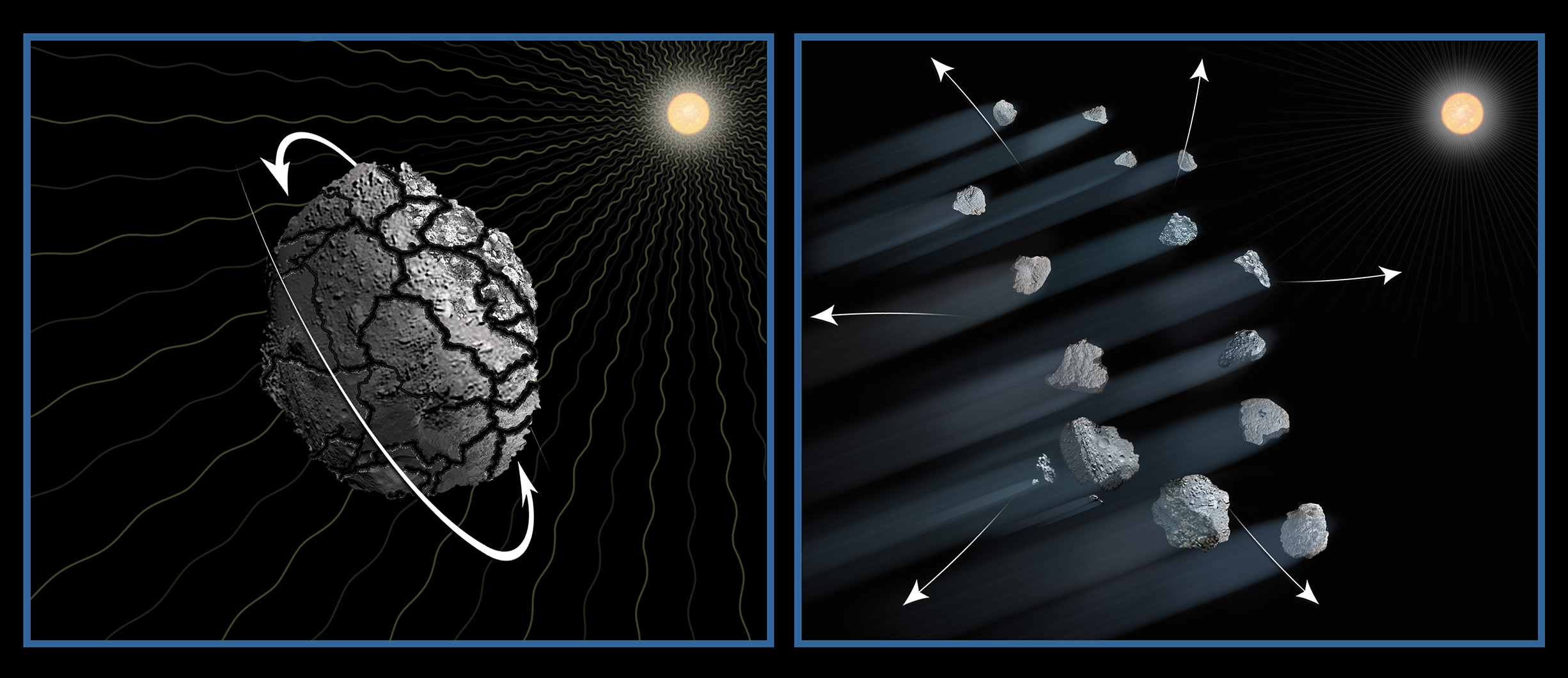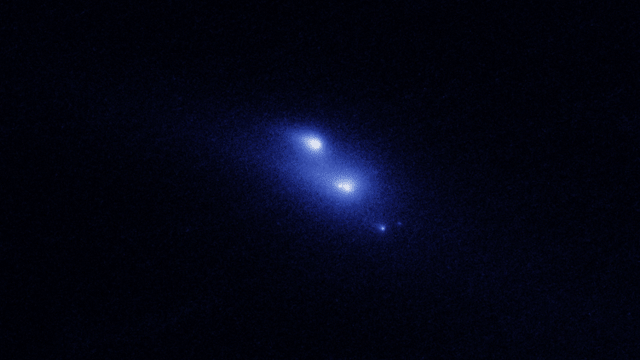What you see above could have not happened, as far as astronomers know. The Hubble space telescope has photographed this never-before-seen break-up of an asteroid. The observed space object has fragmented into several smaller pieces — which is common when comets approach the sun — but the process has never been observed before in the asteroid belt. Yet that is where asteroid P/2013 R3 has now ceased to exist.
The observations were taken using the NASA/ESA Hubble space telescope on 29 October 2013, 15 November 2013, 13 December 2013 and 14 January 2014:

The European Space Agency explains why this cosmic event is so unusual:
The ongoing discovery of more fragments makes it unlikely that the asteroid is disintegrating due to a collision with another asteroid, which would be instantaneous and violent in comparison to what has been observed. Some of the debris from such a high-velocity smash-up would also be expected to travel much faster than has been observed.
It is also unlikely that the asteroid is breaking apart due to the pressure of interior ices warming and vaporizing. The object is too cold for ices to significantly sublimate, and it has presumably maintained its nearly 480-million-kilometer distance from the Sun for much of the age of the Solar System.
This leaves a scenario in which the asteroid is disintegrating due to a subtle effect of sunlight that causes the rotation rate to slowly increase over time. Eventually, its component pieces gently pull apart due to centrifugal force. The possibility of disruption by this phenomenon — known as the YORP effect — has been discussed by scientists for several years but, so far, never reliably observed.
This illustration shows one possible explanation for the disintegration of asteroid P/2013 R3:

Or, you all know, because aliens. [ESA]
Animgif source: NASA, ESA, D. Jewitt (UCLA) and M. Kornmesser
Illustration: NASA, ESA, D. Jewitt (UCLA), and A. Feild (STScI)
